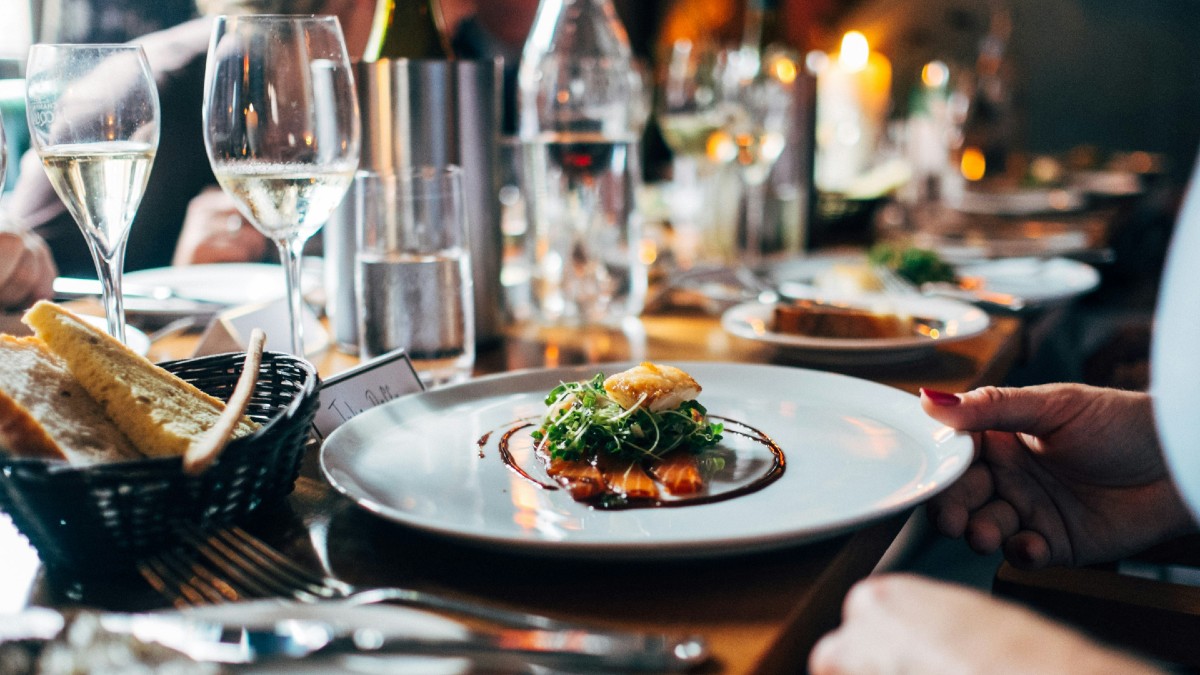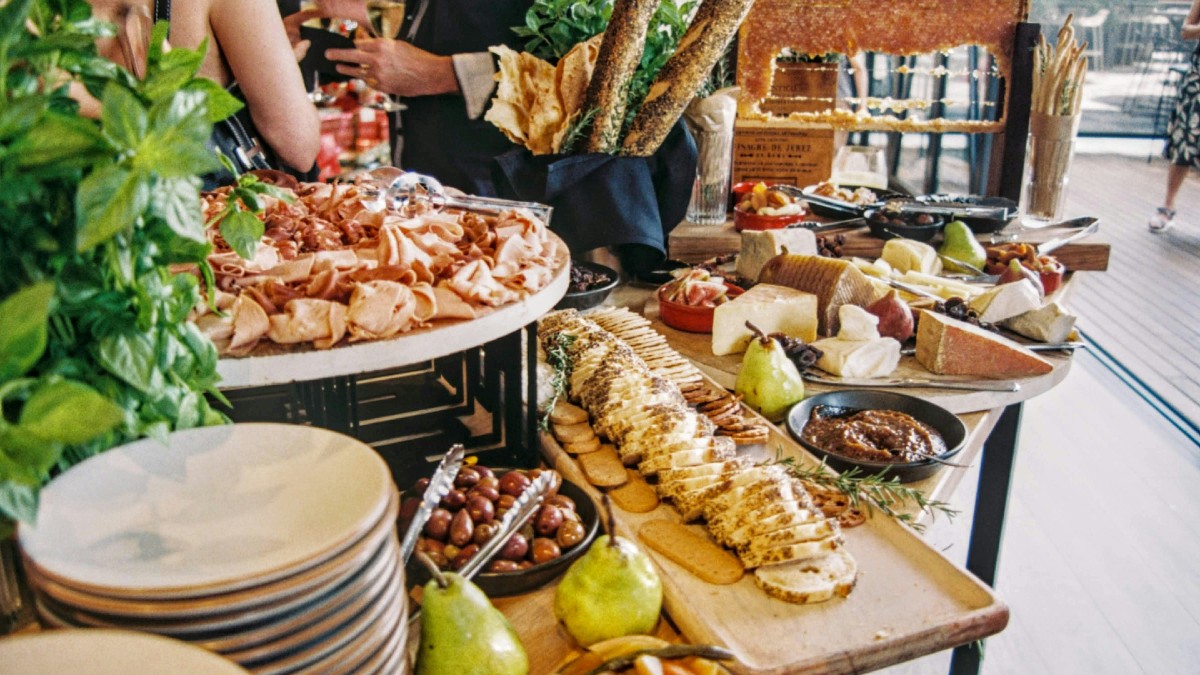
Written by: Cara Tirona
May 21, 2025
A well-organised and visually appealing food display can elevate any event, making it both efficient for guests and aesthetically pleasing. Whether you’re setting up a buffet, food stations, or a plated meal, careful planning and strategic arrangement can enhance the overall experience. In this guide, we’ll explore expert event food display ideas to help you maximise space, improve presentation, and ensure a seamless dining experience.
Understanding the Importance of Food Display
An attractive food display is more than just a visual treat; it serves several practical purposes. First and foremost, it guides guests through their dining experience, making it easier for them to navigate options and serving sizes. A well-planned setup reduces congestion, preventing bottlenecks that can occur during mealtime rushes. Additionally, an enticing arrangement encourages guests to sample a variety of dishes, enhancing their overall experience and satisfaction.
Key Elements of Effective Food Displays
Creating a standout food display requires attention to detail. Here are the essential elements to consider:
Colour and Texture
Integrating a range of colours and textures not only pleases the eye but also highlights the diversity of your offerings. Fresh fruits, colourful salads, vibrant dips, and textured breads can create a visually stimulating display. Incorporate garnishes like herbs or edible flowers to add pops of colour and attract attention.
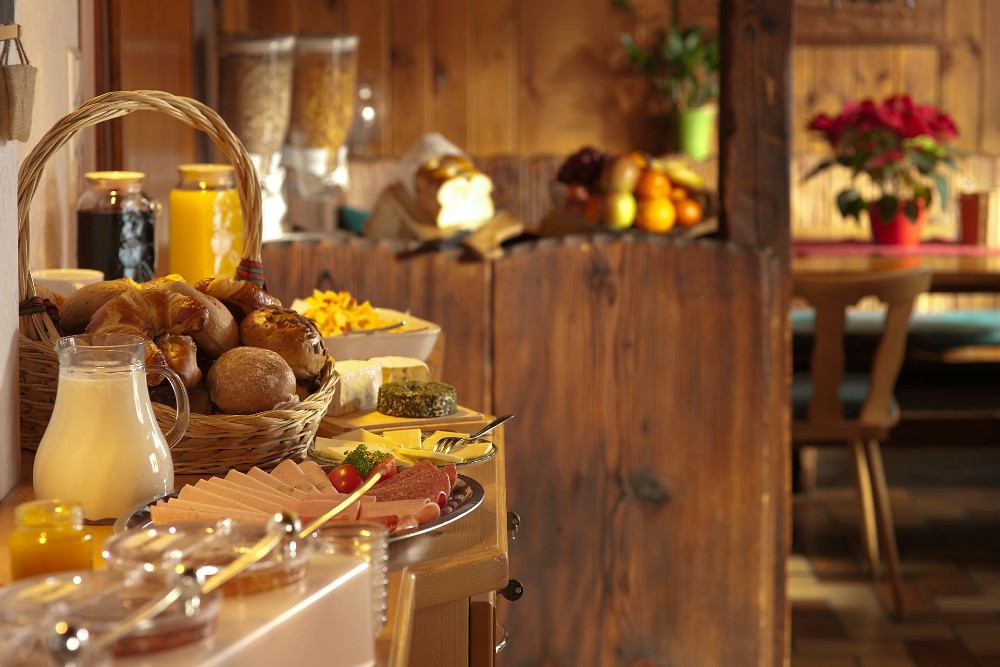
Food Safety
When designing a food display, food safety should always be a top priority. An attractive arrangement can quickly turn unsatisfactory if hygiene and safety standards are not upheld. Here are some essential food safety practices to consider:
Temperature Control: Keeping food at safe temperatures is crucial to prevent foodborne illnesses. Use heated displays or chafing dishes for hot items to maintain warmth (at least 140°F or 60°C), and ice or refrigerated units for cold items (below 40°F or 4°C). Invest in food thermometers to regularly check the temperature of dishes throughout the event.
Proper Food Handling: Ensure that all food is handled with care. Encourage your staff to frequently wash their hands and use gloves when serving food. Provide hand sanitisers at various stations for both servers and guests. It’s also best to avoid communal serving utensils; instead, opt for individual servings or tongs for each dish.
Minimise Cross-Contamination: Separate food items that are raw (like meats) from ready-to-eat foods (like salads). Use different serving platters for various food categories to prevent cross-contamination. Label each dish clearly to help guests identify what they are consuming. This is especially important for allergen management; be explicit about ingredients that may contain common allergens such as nuts, dairy, gluten, and shellfish. Additionally, always ensure that utensils and serving tools used for raw items are not employed for cooked or ready-to-eat foods. It’s helpful to designate specific utensils for each type of food and provide colour-coded serving tools or labels to reinforce this practice.
Keep Food Covered: Keeping food covered is another essential aspect of food safety that contributes to a clean and appealing display. This not only prevents contamination from airborne particles but also helps maintain the temperature of both hot and cold foods.
Strategic Layout
The layout is crucial for flow and accessibility. Keep these principles in mind:
Mind the Flow: Arrange food stations in a logical order (starting with appetisers, followed by main courses, and wrapping up with desserts) to guide guests smoothly through the selection process.
Height Variation: Use pedestals, stands, and tiered displays to add dimension to your presentation. Not only does height variation catch the eye, but it also optimises space, allowing more items to be showcased without overcrowding the table.
Separate Stations: If your event features multiple types of cuisine or varied dietary options, consider setting up different stations. This allows guests to explore their preferences without feeling rushed. Clearly label each station and its offerings, and consider the use of signage that aligns with your event's theme to further enhance the experience.
Traffic Flow: Avoid setting up your tables in a way that creates one bottleneck. Aim for a U-shape or circular layout where guests can circulate easily without feeling cramped. Ensure that there’s ample space between stations and tables to facilitate movement and avoid long waits.
Accessibility and Considerations for Diets
Consider the diverse dietary needs of your guests. Clearly indicate allergenic ingredients and make options easily distinguishable for those with dietary restrictions (e.g., gluten-free, vegetarian, vegan). Labelling can also inform guests about food themes or origin, enhancing the experience and providing interesting talking points.
Visual Cues: Utilise colour-coded labels or themed signage to represent different dietary options. For example, use green labels for vegetarian dishes, yellow for gluten-free options, and red for items that contain common allergens. This helps guests quickly identify suitable choices and feel more comfortable making selections.
Allergen Awareness: In addition to labelling foods, prominently feature allergenic ingredients in a clear section at each food station. For example, if a dish contains nuts, note it explicitly while also using a visually striking icon. This proactive approach instils confidence in guests and shows that you are considerate of their dietary needs.
Set Up for All Heights: Ensure that food displays are accessible for all guests, including children and those with mobility issues. Lower tables and multi-tiered displays can accommodate guests of different heights, making it easier for everyone to reach each offering.
Inclusive Options: Make sure to offer a variety of dishes that cater to different dietary preferences. Include plant-based proteins, gluten-free grains, and dairy alternatives. This not only accommodates guests with dietary restrictions but also introduces new flavours and ingredients to all attendees.
Portion Sizes: Provide smaller portions of each dish to allow guests to sample a variety of foods without committing to a large quantity of any single item. This encourages exploration and makes it easier for individuals to navigate dietary concerns, as they can select items that suit their needs without overindulging.
Clear Communication: In addition to labels, consider providing staff who can answer questions about ingredients or potential allergens at each station. This personal touch reassures guests and fosters a welcoming environment.
Consider the Environment: If your event is outdoors or during warmer months, prioritise food safety by using proper displays and serving methods. Consider chilled serving containers for perishables, and keep items covered until they are served. This not only preserves quality but also ensures that guests with dietary concerns are protected from cross-contamination.
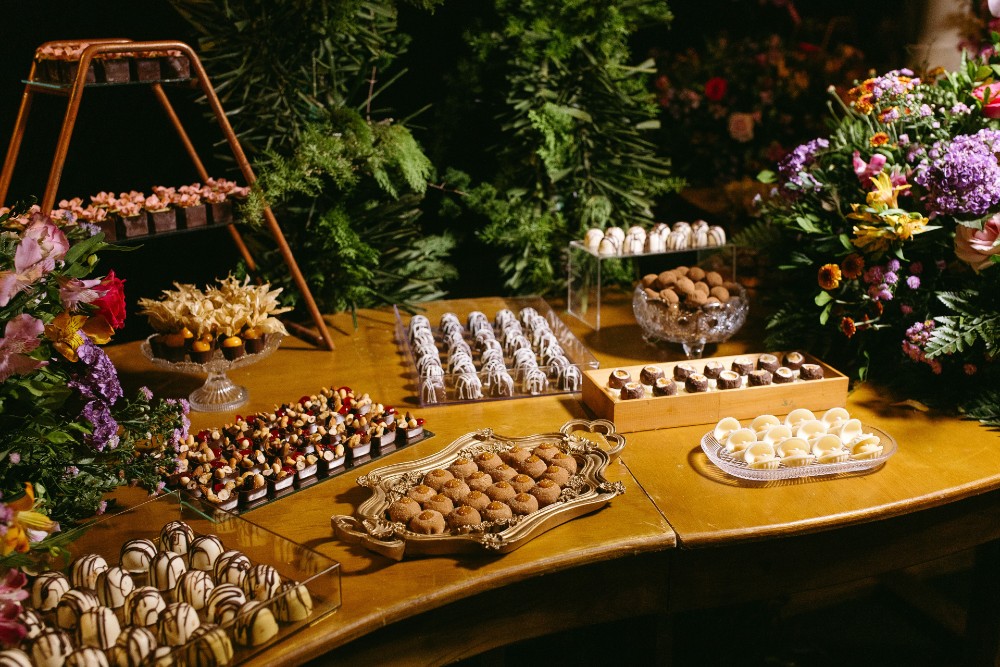
Visual Appeal
Presenting food in an attractive manner stimulates appetite and elevates the overall dining experience. Here’s how to make your display visually stunning:
Use Color Wisely: Vibrant colours draw the eye and can create an inviting atmosphere. Incorporate a rainbow of fruits, vegetables, and garnishes that contrast beautifully. For example, bright cherry tomatoes paired with deep green herbs can create a striking visual effect, enticing guests to explore the offerings.
Creative Servingware: Choose unique plates, bowls, and platters that complement the theme of your event. For a rustic gathering, consider using wooden boards or slate tiles, while modern events may benefit from sleek glass or metallic serving pieces. Creative serving ware not only enhances visual appeal but also reflects your event's overall style. Incorporate decorative elements like greenery, candles, or themed accents.
Layering and Height Variation: Utilise varying heights to add dimension to your food display. Pedestal stands, and tiered cakes can make certain dishes stand out while keeping the display organised. Layering items, such as stackable trays of appetisers or bowls of dips with chips cascading alongside, can create an eye-catching arrangement.
Garnishing: Fresh herbs, edible flowers, or colourful microgreens can elevate the presentation of many dishes. Use these as finishing touches atop plates or scattered around serving platters to create visual interest. For instance, a simple summery salad can transform when topped with bright pansies, and a charcuterie board becomes a feast for the eyes when accented with sprigs of rosemary or vibrant nasturtiums.
Buffet Setup Tips for Seamless Guest Experience
A well-organised buffet encourages guests to serve themselves efficiently while enjoying the beauty of the food display. Here are some tips to streamline your buffet setup:
Logical Flow
Arrange food stations in a logical sequence that allows guests to move smoothly from appetisers to main courses and desserts. Consider creating a circular flow or a linear line that directs traffic, helping to prevent bottlenecks at any particular section. This allows guests to make selections without feeling rushed or overwhelmed. Use double-sided buffets to speed up service and reduce congestion.
Labels and Signage
Clearly label each dish with ingredients and potential allergens. Use attractive signage that matches your event theme to provide information without detracting from the display. This transparency is important for guests with dietary restrictions and can spark curiosity about the food offerings.
Portion Control
Offer smaller serving utensils and plates to help guests take manageable portions. This not only prevents food waste but allows guests to try different dishes without overloading their plates. It also encourages a more leisurely dining experience, as they can return for second helpings if desired.
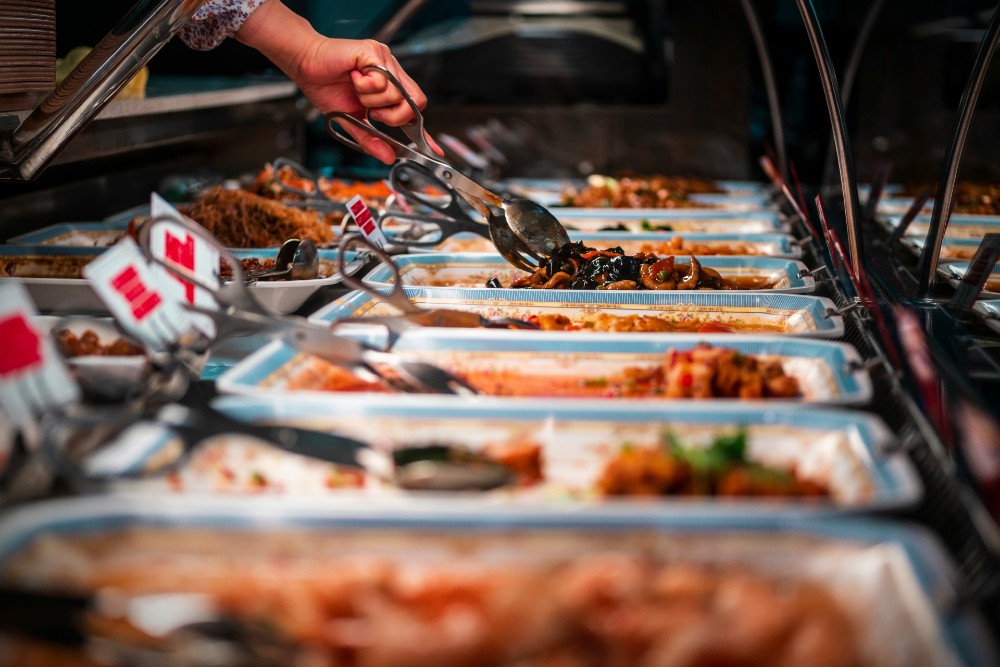
Strategic Layout
Position popular items, such as the main dish and sides, at the center of the buffet table, while placing less popular items at the ends. This placement will encourage guests to naturally gravitate towards the items you want them to notice first. Additionally, consider the serving style of the food: hot dishes should be placed near warming trays or heated platters, while cold dishes should be near ice beds to maintain their freshness.
Designated Stations
Create designated stations for distinct food categories, such as a salad bar, dessert area, or drink station. This strategy not only keeps the table organised but also allows guests to explore different flavours without feeling rushed. For instance, a separate drink station can prevent congestion near the food, giving guests more room to enjoy their meal. Consider offering a mixture of options—non-alcoholic and alcoholic, hot and cold—to cater to different preferences. Ice-filled buckets, dispensers, or punch bowls can enhance the aesthetic appeal while providing easy access for guests.
Conclusion: Elevate Your Event with Smart Food Display Planning
Creating an efficient and attractive food display requires thoughtful arrangement, visual appeal, and strategic space usage. Whether you’re planning a corporate event, wedding, or gala, a well-designed food setup enhances the guest experience and streamlines service.
Looking for the perfect venue to host your event? VenueNow makes it easy to find and book venues that complement your catering needs. Explore and book your ideal venue today!
Looking for an event venue to hire?
VenueNow has you covered with over 2,000 venues across Australia ranging from large event spaces to small meeting rooms. Find your perfect venue for hire faster than anywhere else.
Follow us on social media to stay up to date with the latest news
Customers
Want to get in contact?
Call our support team on 1300 647 488 during business hours AEST.
© Copyright VenueNow 2025 | SPARE GROUP PTY LTD | ABN 22 607 830 302







